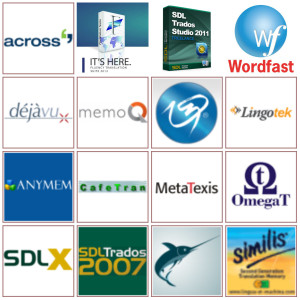15 May
2015
CAT tools
CAT stands for Computer Aided Translation. Its concept revolves around helping translators not to translate the same sentence twice, which dramatically increases their output and keeps consistency. CAT tools are particularly useful with files that contains high rate of repeated text or projects that are updated regularly.
The first and most important step when starting a new project is creating what is called a Translation Memory (TM). But what is a TM? It is the database where all translation units are stored. When creating a TM, there are a few options to choose from including the 2 languages you are going to use, where you want to save the TM and what name you would like to give it. Once you finish this step, you are good to go.
Now that you have created a translation memory, you can start translating. Whenever a translation unit is saved in the TM, the program automatically retrieves it from the TM when it occurs again. Additionally, if the new sentence is not typically matching the one in the TM but is similar to it, the program offers what is called a Fuzzy Match. Fuzzy matches refer to the similarity percentage of what you have in your translation memory and the new sentence. To ease your job, the program highlights the different portion so that you can edit as per the new sentence.
CAT tools offer a wide range of options and features to ease the translator’s job. For example, using the Concordance feature, you can search the translation memory for a word or a sentence so that you are consistent throughout. In most CAT tools, there is an internal spelling check which saves you the time of exporting the file to MS Word and then applying the corrections back in the program. Quality Assurance is one of the best features in CAT tools. When you use this feature, you are sure there are no wrong numbers, missing translations, empty units or misplaced tags (that keep the format of the original document).
There are tens of CAT tools out there with different popularity degrees. SDL Trados comes on top with about 35% share of CAT users; Wordfast and MemoQ come next with a total share of about 10% each followed by Déjà Vu with a less percentage. There are companies who create their own internal CAT tools and ask their translators to use like CBG Transtool.
In light of the above, can we say that CAT tools are the same as machine translation? Absolutely NO. Machine translation, as the name suggests, refers to using a machine to do the work for you, like Google Translate. All what you do is to insert the sentence/paragraph you want translated and the tool gives you what is supposed to be a translation. In most cases, machine translated text is not accurate and lacks the use of idiomatic language. Unlike machine translation, CAT tools just help the translator expedite the process but they do not propose translations on their own; they use translations that you, human translator, have fed them previously!
To conclude, CAT tools are very helpful to translators in that they increase the output and maintain consistency in the translated text. However, they are entirely different from machine translation which is based on a group of dictionaries that are initially fed to the translation engine and it does not include any human intervention to edit the translated text.

